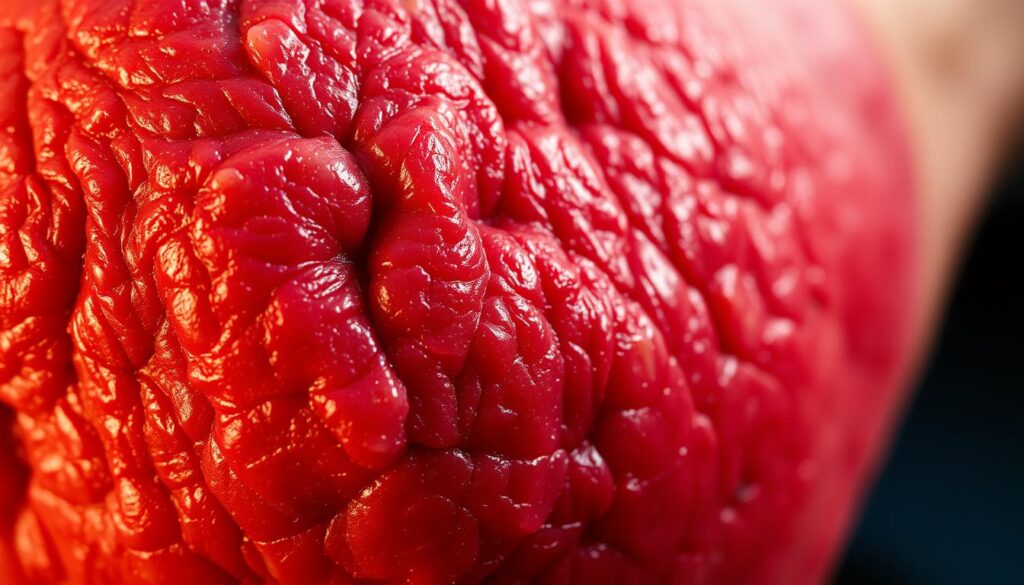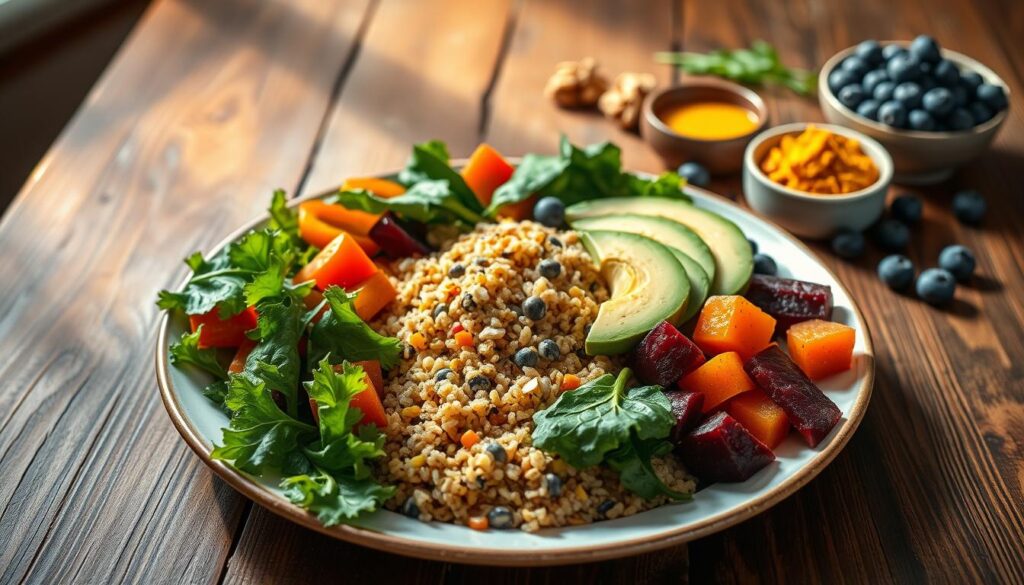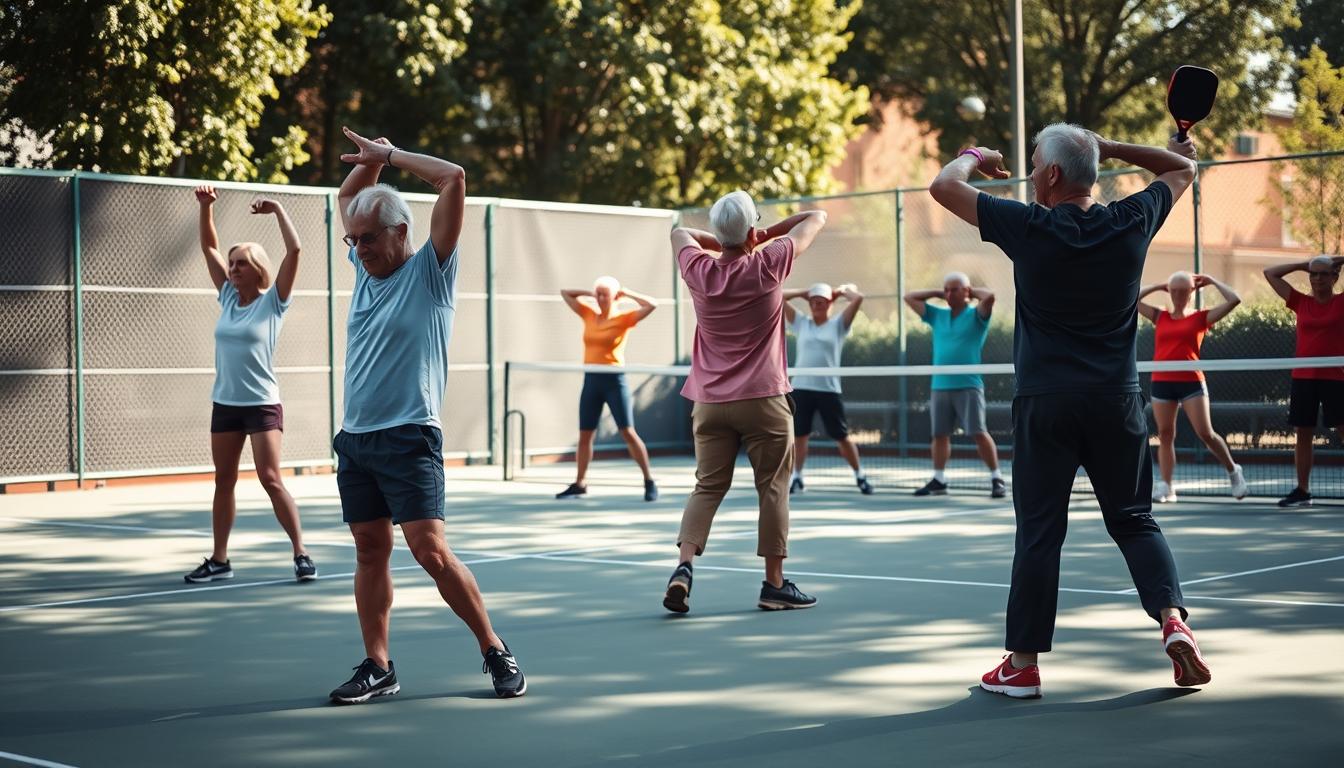Could one simple shift in your plate make matches easier and recovery faster?
This short guide explains why a clear, practical anti -inflammatory diet can support the health and performance of active older players who follow a plant-based plan.
Low-level chronic inflammation can raise disease risk and slow recovery. Choosing the right fruits, vegetables, whole grains, beans, nuts, seeds, olive oil, and certain spices helps the body manage inflammation and stay resilient.
The benefits include better joint comfort, quicker recovery, steadier energy, and long-term gains for heart and brain health.
This article is a how-to roadmap tailored to vegans, with an easy plate-building approach, an omega-3 strategy without fish, herbs and tea tips, things to limit, and a sample day designed for U.S. grocery shelves and budgets.
Expect evidence-based advice adapted from Mediterranean and MIND patterns to fit a fully plant-based routine that supports performance on and off the court.
Why inflammation matters for 50+ vegan pickleball players right now
Managing inflammation right now can improve next-day readiness, reduce stiffness, and protect long-term health. This matters for active older players who want steady energy and faster recovery.

Acute versus chronic responses
Acute inflammation is short-lived and helps repair muscles and joints after training. It starts healing and signals rest and nutrition needs.
Chronic inflammation, by contrast, means persistently high inflammatory signals that slow recovery and increase pain. It raises risk for heart disease and type 2 diabetes.
Age, immune shifts, and training load
With age, baseline levels of markers tend to rise. The immune system also shifts, so antioxidant- and polyphenol-rich plant choices help modulate pathways.
High training loads without recovery nutrition elevate inflammatory levels and worsen stiffness and soreness. People who regularly eat berries, crucifers, tomatoes, and extra virgin olive oil often show lower CRP.
“Lowering chronic inflammation supports joints, vascular health, and faster recovery.”
Track how you feel on- and off-court as you tweak your plate and routines.
How to build an anti-inflammatory vegan plate for performance and pain relief
Start with a visual plate: half produce, a quarter whole grains, and a quarter plant protein. This pattern borrows from the mediterranean diet and MIND principles while staying fully plant-focused.

Make vegetables and fruits the bulk of each meal. Leafy greens, colorful vegetables, and berries supply antioxidants and polyphenols — key nutrients that support recovery and reduce low-level inflammation.
Choose whole grains such as oatmeal, brown rice, and whole wheat for fiber. Fiber helps gut health, which in turn helps regulate inflammatory responses.
Plate components and practical tips
- Half the plate: leafy greens plus mixed vegetables and a serving of fruits vegetables like berries or tomatoes.
- One quarter: whole grains — quinoa, brown rice, oats — to fuel long matches and aid gut health.
- One quarter: legumes or soy (beans, lentils, tofu, tempeh) for steady protein and muscle repair.
- Use olive oil as the main oil for dressings and cooking; its phenolics add antioxidants.
- Season with herbs and spices, and limit ultra-processed options so nutrient density stays high.
Adjust portions by court time: add extra grains and legumes on heavy days, and favor more vegetables on lighter days. Plan meals ahead so these choices are simple when schedules get busy.
Pickleball vegan over 50 anti-inflammatory foods: the core list
Focus on a compact roster of plant staples that support recovery, joint comfort, and steady energy.
Leafy greens and cruciferous vegetables supply concentrated vitamins and minerals plus fiber. Kale, spinach, broccoli, and Brussels sprouts provide sulforaphane, which helps lower inflammatory cytokines. Rotate raw salads and quick-steamed crucifers across the week for variety.
Antioxidant-rich fruits to add daily
Berries—blueberries, strawberries, raspberries—deliver anthocyanins that support recovery between matches. Cherries and grapes add resveratrol; tart cherry juice has been linked to lower CRP in older adults over 12 weeks.
Healthy fats and simple swaps
Extra virgin olive oil offers oleocanthal and phenolics; use it for dressings and low-heat cooking. Avocado brings monounsaturated fat and phytonutrients tied to lower IL-1β and CRP. Sprinkle walnuts, chia, and flax for texture and omega-3 ALA.
Plant proteins for repair
Build meals around beans, lentils, tofu, and tempeh. These sources meet protein needs for muscle maintenance while keeping saturated fat low.
“Cooking tomatoes with olive oil increases lycopene absorption, and simple swaps—like olive oil for processed spreads—add both flavor and function.”
- Prioritize kale, spinach, broccoli, Brussels sprouts for vitamins, minerals, fiber, and sulforaphane.
- Choose berries and include cherries or grapes for antioxidants and recovery support.
- Use extra virgin olive oil and avocado for anti-inflammatory fats.
- Rely on beans, lentils, tofu, and tempeh for steady plant protein.
| Category | Examples | Key compounds | Practical tip |
|---|---|---|---|
| Leafy & cruciferous | Kale, spinach, broccoli, Brussels sprouts | Sulforaphane, vitamins, minerals | Steam or sauté with garlic and olive oil |
| Fruits | Blueberries, cherries, grapes, tomatoes | Anthocyanins, resveratrol, lycopene | Add berries to breakfast; cook tomatoes with oil |
| Healthy fats | Extra virgin olive oil, avocado, walnuts, chia, flax | Oleocanthal, monounsaturated fats, ALA | Finish salads with oil; top bowls with seeds |
| Plant proteins | Beans, lentils, tofu, tempeh | Complete amino acids, fiber | Batch-cook beans and marinated tofu for quick meals |
Omega-3 fatty acids on a vegan diet
Not all omega-3 fatty acids act the same in the body. Plant sources supply ALA, while EPA and DHA are typically found in marine sources and are more directly tied to resolvins and protectins that reduce inflammation.
ALA sources and limited conversion
Key ALA-rich options include ground flaxseed, chia seeds, hemp hearts, and walnuts. Add them to smoothies, oatmeal, or salads to boost daily intake.
The body converts ALA into EPA and DHA, but conversion is relatively inefficient. Some active adults get enough from ALA alone; others may not.
When algae EPA/DHA makes sense
Research and clinical studies show EPA and DHA from marine sources can lower markers like CRP. Vegans can choose algae-based oil to raise blood EPA/DHA without fish.
“Consider an algae oil supplement if joint soreness persists or an omega-3 index is low.”
- Practical target: include an ALA source daily (1–2 tablespoons ground flax or chia).
- Pair seeds with a small oil-based dressing to help absorption of fat-soluble nutrients.
- Discuss algae EPA/DHA with a clinician when training load or recovery needs increase.
Spices and herbs with evidence-backed anti-inflammatory benefits
Everyday herbs and spices offer measurable benefits that support joint comfort and recovery.
Curcumin, the active compound in turmeric, has the strongest research base among common seasonings. In several studies, doses near 1,000 mg/day reduced joint pain and supported bone health in people with arthritis. Absorption rises sharply when curcumin is paired with piperine from black pepper.
Other kitchen-friendly choices
Ginger, garlic, cinnamon, and rosemary add polyphenols and flavor. Cardamom, clove, cumin, fennel, fenugreek, and onion also show promising effects in small trials and lab research. Use them daily to build steady levels of protective compounds.
Practical dosing and safety
Start with culinary amounts across meals—ginger in smoothies, garlic in soups, cinnamon in stews, rosemary with roasted vegetables. Track recovery and comfort after sessions before considering concentrated supplements.
“Spices work best as part of a whole dietary system, not as stand-alone fixes.”
- Discuss high-dose curcumin with your clinician if you take blood thinners or have gallbladder issues.
- Monitor tolerance and medication interactions when adding extracts.
- Layer spices across the day to sustain benefits and improve taste, which helps adherence.
Smart sips: anti-inflammatory drinks that support play and recovery
Smart drink choices can sharpen focus during play and speed recovery afterward. The right beverages add concentrated plant compounds, steady energy, and hydration without extra sugar.
Green and white tea polyphenols for antioxidant support
Green and white tea supply polyphenols such as EGCG. These compounds provide antioxidants and may help lower pro-inflammatory cytokine levels over time.
For best results, brew tea earlier in the day and use decaf options in the late afternoon before evening matches to protect sleep.
Coffee: benefits, caffeine timing, and sleep considerations
Coffee offers antioxidants and alertness benefits and can support blood vessel function. Aim to cap caffeine to personal tolerance and avoid late-day intake to prevent sleep disruption.
Hydration basics: water and green smoothies for on-court days
Hydration should match thirst and activity. Pre- and post-play water reduces fatigue from mild dehydration and helps maintain performance during long rallies.
Green smoothies blend berries with spinach or kale and a fortified non-dairy milk for a portable, diet-friendly boost. Remember, liquids count toward hydration, but whole foods still add needed fiber and satiety.
“Skip sugar-sweetened beverages around play — they can spike and crash energy.”
Foods and cooking methods to limit for lower inflammation
Small shifts in snacks and cooking methods can change how your body handles stress and repair. Limiting a few common items supports recovery and steadier energy on busy days.
Ultra-processed snacks, refined carbs, and sugar drinks
Higher intake of fast meals, processed snacks, refined carbs, and sugar-sweetened beverages links to higher CRP and worse recovery.
Aim to replace packaged snacks with whole fruit, nuts, or plain yogurt alternatives to steady blood sugar and support performance.
Fried foods, excess omega-6 oils, and trans fats
Fried foods raise oxidative stress. High-heat batters and omega-6 heavy oils can push the omega-6 to omega-3 ratio the wrong way.
Check labels and avoid partially hydrogenated oils. Trans fats raise LDL and risk for heart diseases and type 2 diabetes.
Alcohol guidance for older athletes
Light to moderate drinking may fit some people, but more than one drink daily can increase inflammation and disrupt sleep and recovery. Consult your clinician for personalized limits.
- Limit ultra-processed items and refined carbs so foods support recovery.
- Avoid sugar-sweetened beverages on training days to prevent energy crashes.
- Use baking, steaming, or sautéing with a small amount of olive to cut added oil and unhealthy fats.
| Item to limit | Why it matters | Swap |
|---|---|---|
| Fried foods | Increase oxidized fats and inflammatory stress | Baked or air-fried veggies and chickpea snacks |
| Sugar drinks | Cause blood sugar swings and extra calories | Sparkling water with lemon or iced tea unsweetened |
| Processed snacks | Linked to higher CRP and poor recovery | Whole nuts, fruit, or hummus with veggies |
| Partially hydrogenated fats | Raise LDL and long-term disease risk | Choose oils with known labels and whole-food fats |
Reducing these choices lowers total inflammation and helps joints and muscles recover across consecutive sessions. Small swaps add up.
Sample one-day vegan anti-inflammatory meal plan for active adults 50+
A single practical day of meals can show how diet choices support energy, recovery, and joint comfort for active adults.
Pre-play fueling and quick snacks
Breakfast: oatmeal made with whole grains, topped with berries, ground flax, and walnuts. Pair with green tea for polyphenols and steady energy.
Pre-play snack ideas: a banana with almond butter or a small green smoothie (spinach, frozen cherries, fortified soy milk). These give fruits and vegetables plus a bit of protein for sustained effort.
Lunch, post-match, and make-ahead dinner
Lunch: kale and quinoa bowl with roasted broccoli, cherry tomatoes, chickpeas, avocado, and olive oil–lemon dressing. This balances protein, healthy fats, and fiber.
Post-match recovery: tofu scramble seasoned with turmeric and black pepper, served with sweet potato and sautéed greens to restore glycogen and support muscle repair.
Make-ahead dinner: lentil and mushroom marinara over whole grain pasta with a side salad and olive oil vinaigrette. Batch-cook lentils and grains on weekends to simplify busy weeks.
Snacks and daily distribution
- Snacks: carrot sticks with hummus, grapes, or a square of 70% dark chocolate.
- Daily protein comes from legumes, tofu, and tempeh, spread across meals to keep energy levels steady and aid recovery.
| Meal | Key components | Protein source | Quick tip |
|---|---|---|---|
| Breakfast | Oatmeal, berries, flax, walnuts | Walnuts + flax | Pre-mix dry oats and seeds for fast mornings |
| Pre-play | Banana or green smoothie | Fortified soy milk | Drink 30–60 minutes before activity |
| Lunch | Quinoa bowl, broccoli, chickpeas, avocado | Chickpeas, quinoa | Pack dressing separately to keep salad fresh |
| Dinner | Lentil marinara, whole grain pasta, salad | Lentils, tempeh option | Freeze single portions for busy nights |
“Batch-cooking grains and beans on weekends saves time and keeps meals consistent during heavy play weeks.”
Grocery list and budget-friendly swaps in the United States
Make shopping simple so healthy meals are easy to follow. Choose seasonal produce and reliable pantry staples to keep costs down and meals fast to prepare.
Seasonal produce and frozen alternatives
Build your list around seasonal fruits and vegetables and add frozen berries, spinach, and broccoli when prices spike. Frozen options keep nutrients and lower waste.
Pantry staples: whole grains, legumes, spices, and oil
- Stock brown rice, old-fashioned oats, whole wheat pasta, and quinoa for filling meals.
- Buy dry lentils and bulk chickpeas for budget-friendly protein that reheats well.
- Keep a jar of extra virgin olive oil as your main cooking oil; check labels for harvest date and origin.
- Store nuts and seeds in the fridge to preserve freshness and stretch servings.
| Staple | Why | Swap idea |
|---|---|---|
| Frozen berries | Affordable, year-round antioxidants | Mix into oats or smoothies |
| Dry beans | Low-cost protein and fiber | Batch-cook for salads and stews |
| Extra virgin olive oil | Healthy fat and flavor | Use for dressings and light sautés |
Use store brands and warehouse buys for staples, plan batch recipes, and shop with a prepared list to avoid impulse purchases. Small swaps keep your diet practical and budget-friendly while supporting recovery and steady energy.
Supplements, meds, and medical considerations
When diet alone falls short, certain supplements may support joint comfort and recovery. Use them as part of a broader plan that includes whole foods, sleep, and training adjustments.
Curcumin and algae-based omega-3s
Curcumin supplements often include piperine to boost absorption. Several studies and research trials report reduced inflammatory markers and symptom relief for some people.
Algae-derived EPA/DHA gives a direct marine-style omega-3 option for people who do not eat fish. Blood levels of EPA/DHA can rise with algae oil, which may help recovery and certain disease risk markers.
Safety, interactions, and practical steps
- Discuss supplements with a clinician if you take blood thinners, antiplatelets, or have gallbladder or liver conditions.
- Monitor symptoms and blood levels with periodic testing to gauge benefits and adjust doses.
- Remember: supplements complement anti -inflammatory foods and do not replace a consistent dietary pattern.
- Watch caffeine intake and sleep, since system recovery and inflammation levels link to sleep quality; up to 400 mg/day is generally safe but varies by person.
“Schedule regular check-ins to align supplements with training cycles, safety, and measurable benefits.”
Conclusion
To finish, small daily shifts in meals and spices can add up to measurable gains in recovery, blood markers, and overall resilience.
Centering fruits, vegetables, whole grains, beans, nuts, seeds, and extra virgin olive oil creates a sustainable pattern that supports health and on-court performance. These choices supply polyphenols, fiber, and healthy fats that help the body repair and adapt.
While fish provide EPA/DHA for many, algae-based omega-3 supplements and ALA from flax, chia, hemp, and walnuts offer plant pathways to similar acids. Lowering chronic inflammation links to reduced risk of several disease and improved quality of life into older age.
Track how you feel and monitor simple blood markers with your clinician. Start with one upgrade this week — a greens-and-berries breakfast, swapping in extra virgin olive oil, or adding turmeric plus black pepper — and build steady benefits over time.




